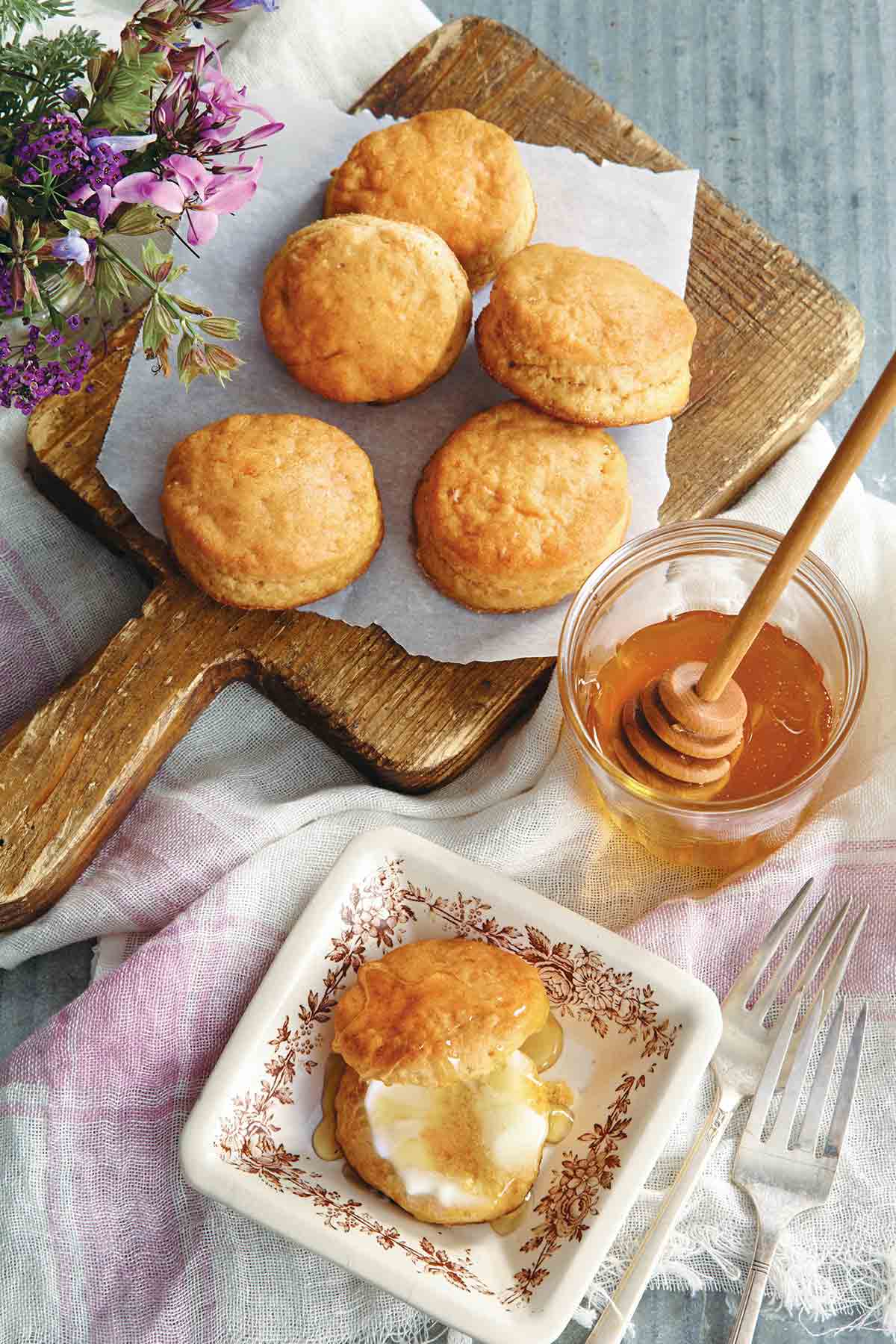
In 1976, Mildred Cotton Council opened Mama Dip’s Kitchen, named for the childhood nickname given to her by her siblings because her height and long arms allowed her to dip a ladle all the way into the bottom of the rain barrel. The restaurant is a Chapel Hill institution, serving up Southern-style family meals, including these sweet potato biscuits.–Editors of Southern Living Magazine
LC Slap Some Ham Or Turkey On These Note
Would a biscuit by any other name taste as sweet? These wee sweet potato darlings are pretty spectacular, though they fall more into the dense-yet-tender camp than the flaky, crisp-edged biscuit camp. Whatever you wanna call them, their faint sweetness plays just as nice with butter as it does with some ham or turkey that you slapped on a sliced biscuit. If you don’t own a biscuit cutter and don’t care about going a little rogue, use the lid of a jar in its place.
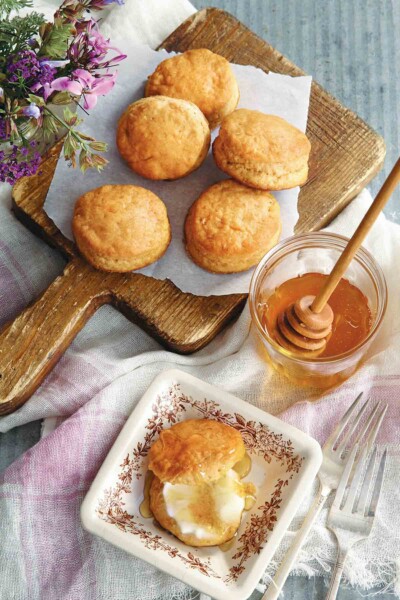
Sweet Potato Biscuits
Equipment
- 2-inch round biscuit or cookie cutter
Ingredients
- 4 cups self-rising flour*
- 1/8 teaspoon baking soda
- 3 tablespoons granulated sugar
- 2 cups cooked and mashed sweet potatoes*
- 1 stick unsalted butter, melted, plus more for the pan
- 1 to 1 1/4 cups whole milk
- All-purpose flour, for the work surface
Instructions
- Preheat the oven to 400°F (204°C). Lightly butter 2 baking sheets.
- Whisk together the flour, baking soda, and sugar in a large bowl. Make a well in the center.
- Stir together the sweet potatoes, butter, and 1 cup milk in a large bowl until well blended. Pour this into the flour mixture and stir with a fork just until the dough comes together and pulls in the dry ingredients. The dough should be soft and sticky, but not wet. If necessary, add the remaining 1/4 cup milk, a little at a time, to moisten the dough.
- Lightly sprinkle your work surface with all-purpose flour. Turn the dough out and knead it gently 8 to 10 times. Pat or roll the dough to 3/4-inch thickness. Stamp out biscuits with the 2-inch round cutter; do not twist the cutter. Dip the cutter in all-purpose flour if the dough sticks. Reshape the dough scraps once and cut as many more biscuits as you can. Place the biscuits on the prepared baking sheets.
- Bake for 15 minutes or until firm and golden brown. Let cool slightly before serving.
Notes
*Cooked Sweet Potatoes Note
To cook sweet potatoes, select small spuds and either boil the unpeeled potatoes in a saucepan of salted water or roast them in a 375°F (190°C) oven or microwave until very tender. Let the sweet potatoes cool until you can handle them, then slip off and discard the skins. Using a fork, mash the sweet potatoes. The mashed potato pulp should have the consistency of canned pumpkin. If the pulp is too wet, spoon it into a wire-mesh strainer lined with a paper towel. Place the strainer over a bowl, refrigerate for at least 1 hour and up to overnight, and then discard the collected liquid.*Self-Rising Flour Note
We know self-rising flour isn’t necessarily a staple in everyone’s pantry, so we want to share how to make your own self-rising flour. We use this very easy equation: 1 cup of self-rising flour = 1 1/2 teaspoons baking powder + 1/2 teaspoon salt + 1 cup all-purpose flour.Nutrition
Nutrition information is automatically calculated, so should only be used as an approximation.
Recipe Testers’ Reviews
This sweet potato biscuits recipe makes a moist, dense, buttery biscuit. It was perfect with a little butter and honey. I also think it would be great with ham or turkey. The recipe made 24 two-inch biscuits for me. I did not need to add the extra milk. I left the biscuits in the oven for 17 to 18 minutes. It was hard to tell when they were brown. It took me less than a half hour total to make the biscuits, including baking the sweet potatoes in the microwave.
Since there were no leftovers from Thanksgiving, I decided to make a turkey breast for my husband and serve them with what seemed like would be a delicious biscuit. It did not disappoint! The biscuits are easy to put together and took about 25 minutes. I bought 4 small (6 1/2 ounces each) sweet potatoes (really garnet yams) and microwaved them until tender, about 7 minutes. I let them cool and scooped out the flesh to make exactly 2 cups mashed sweet potato. They seemed dry, so no need to drain the water out. There was a problem, though: I had to add another cup or so of self-rising flour before the dough was not too sticky for me to handle or knead. I used White Lily self-rising flour, which is lighter and has less gluten than other brands, and that might have been why I had to add more flour. And it definitely did not need more milk. They baked perfectly brown in 15 minutes on convection bake. The only thing I’d do differently is to brush the tops of the biscuits with melted salted butter. Otherwise, the biscuits are moist, sweet, and delicious—wonderful to serve any time of year.
This recipe makes an amazing biscuit. Easy, fast, and fun. If you need something to do with leftover sweet potatoes, then this is the recipe for you. We baked our potatoes for 45 minutes, allowed them to cool, and mixed our ingredients. I made my own self-rising flour by adding 1 tablespoon baking powder and 1 teaspoon salt to 4 cups flour. I needed to add more milk but not quite 1/4 cup. I also didn’t cut with a biscuit cutter; instead I shaped my dough on a floured surface into a rectangle and cut a grid of 5 by 6 biscuits, thereby eliminating the need to reshape the biscuit dough. They baked in 20 minutes with a 180° turn halfway during baking.
These sweet potato biscuits are the perfect balance of dinner biscuit and dessert scone. They are a little denser in the middle than a traditional biscuit but do have the typical crisp bite on the outside. They are delicious with or without butter, with or without honey, with or without any other food. They could be a great snack in the morning with coffee, with lunch, in the afternoon as a pick-me-up, with dinner, or stolen immediately off the cookie sheet when they come out of the oven. They come together in about 15 minutes, and that was with me making my own self-rising flour. The baking time of 15 minutes is spot-on as well. Note: Parchment paper on the cookie sheet during baking makes for easy removal of the biscuits and quick cleanup.
Sweet potato biscuits are not something that’s on my menu, and for that reason alone, I decided to try this recipe. Never having eaten one before, I wasn’t sure exactly what to expect. I know it isn’t quite fair to judge a recipe by the time it takes me to run around the kitchen and gather up ingredients, but I did it anyway. It only took me half an hour to get these beauties onto the pans and into the oven. I did need the extra 1/4 cup milk, and I roasted 4 beautiful native Louisiana sweet potatoes. Perfect! My biscuits needed a 25-minute bake before they turned a slight golden brown—which, by the way, is pretty hard to see when you have a beautiful gold dough to begin. This recipe made exactly 24 biscuits cut with a 2-inch biscuit cutter. Just for testing purposes, I warmed my leftover biscuits in oven at dinnertime and and let them get even more golden—perfect again. I can’t say that I’m a sweet potato biscuit convert, but they’re nice for a change of pace. And I think they will be perfect in a holiday buffet line with some ham to slide inside. All in all, a keeper.
These sweet potato biscuits have a beautiful color and mild flavor that would be perfect for any occasion. I roasted my sweet potatoes because I wanted that drier texture. The recipe is easy to mix up and makes a lot of biscuits. My yield was a little over 3 dozen. I did not have to use the extra 1/4 cup milk. The biscuits I rolled out the first time were fluffier than the ones where I re-rolled the dough. The top pan in my oven took 17 minutes to bake and the bottom pan took 23 minutes.
Perfect for breakfast, tea time, dinner—is there ever a meal when a lovely biscuit wouldn’t fit right in? And these are quick, easy, and so much prettier than plain white-flour biscuits. I baked my sweet potatoes the night before because, unlike the suggestion in the recipe, I had large sweet potatoes, which I knew would take a long time to roast. It took an hour and a half for them to soften to a very tender state. My sweet potato pulp needed no straining. With 1 cup milk, my dough was soft and very sticky, not wet, and definitely not in need of any additional moisture. In fact, I kneaded in a bit more flour because it seemed too sticky, and I then patted the dough to a 3/4-inch thickness. I may have patted a bit too far because my yield was 52 biscuits, cut with the 2-inch round cutter. My baking time ranged from 10 to 12 minutes. I admit to reshaping the scraps twice, but my second reshaping yielded only 4 of those 52 biscuits. They were devoured at Thanksgiving dinner, and while they were not the only bread option, they were the first to go! Great plain, terrific with butter, lovely with honey, wonderful with jam, and so visually appealing—the bright orange of the sweet potato mellowed into a saffron-colored biscuit, which may have been part of the reason they disappeared so quickly! I made my own self-rising flour. While there is no reason to be concerned about leftovers—there won’t be any—do treat this recipe with the timely respect given to other quick breads. I served these with a lovely unsalted butter. Now I’m also thinking compound butter. Sweet (honey? maple?) or savory (garlic? onion? chive?) would all work beautifully depending on the time of day and/or the rest of the meal.
I confess to liking all manner of biscuits, from homemade to Red Lobster’s cheesy ones to Pillsbury Grands! with the exploding containers. Even—heaven help me—those from a fast-food joint that will go unnamed that have probably been sitting out for hours. The thing that all of those biscuits have that these don’t is flakiness. And though I did miss that, these were hearty, moist, and darn right delicious. If you think of them as sweet potato rolls instead, their value increases immensely. It’s a little hard to judge the correct texture, both in the dough and the final product. I did need the extra milk that the author suggested to bring the dough together, but then needed quite a bit of extra flour in order to do something even remotely close to kneading. I’m sure my extra handling contributed to the density of the baked biscuits, so proceed cautiously when adding the milk and make sure your workspace is well-floured before starting. I pulled the sweet potato biscuits out of the oven when the outsides looked done; my taster found them to be a bit underdone and not fluffy enough while I appreciated how tender they were, both initially and the day after. I wonder if using cold butter would render some of the more typical biscuit flakiness. Regardless of the texture, we both really liked the taste and polished off a half dozen each without complaint. I enjoyed them buttered, plain, and alongside a mofongo-like stew. I used a jar lid instead of a biscuit cutter, which was about 2 3/4 inches across.
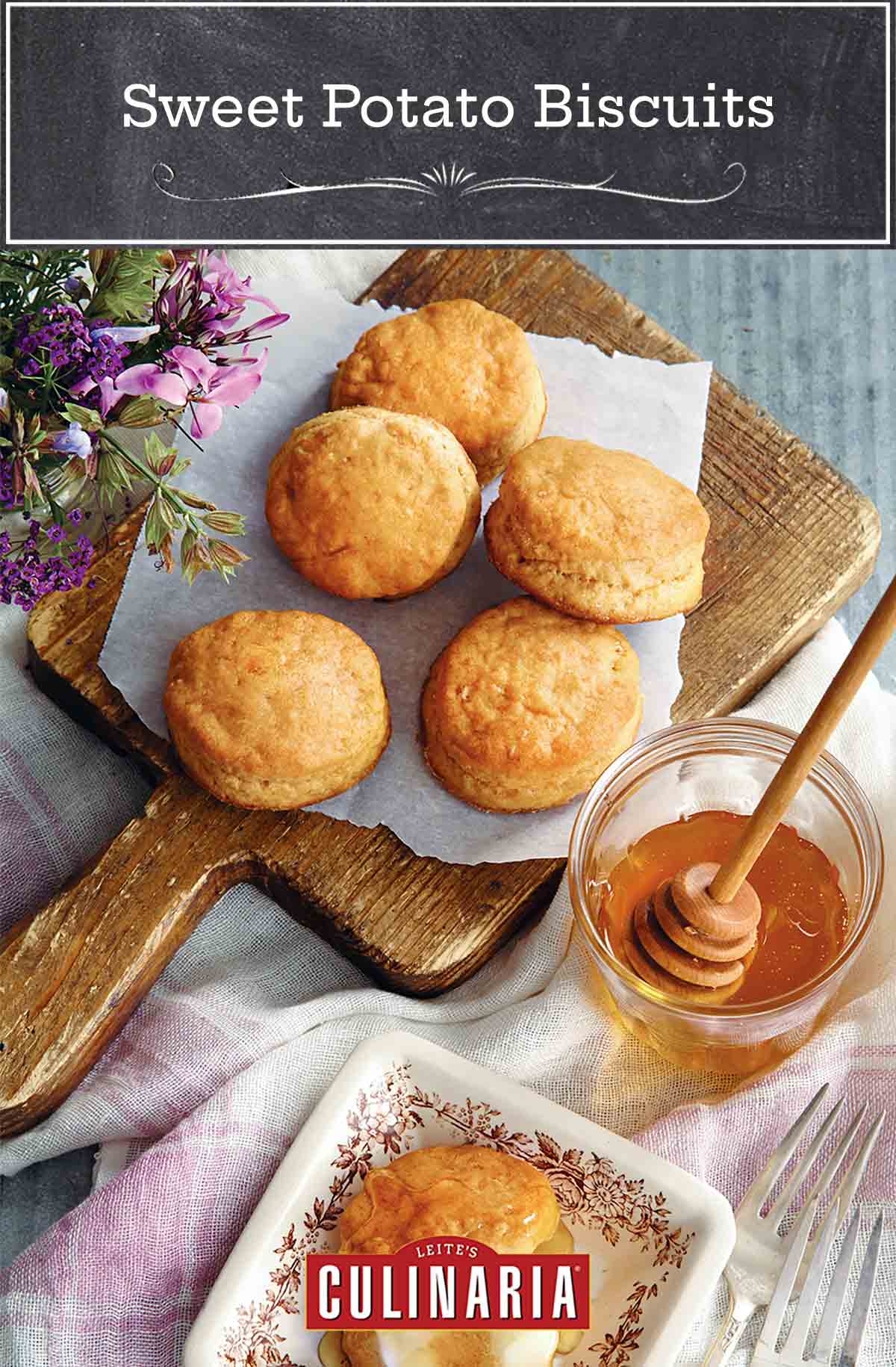






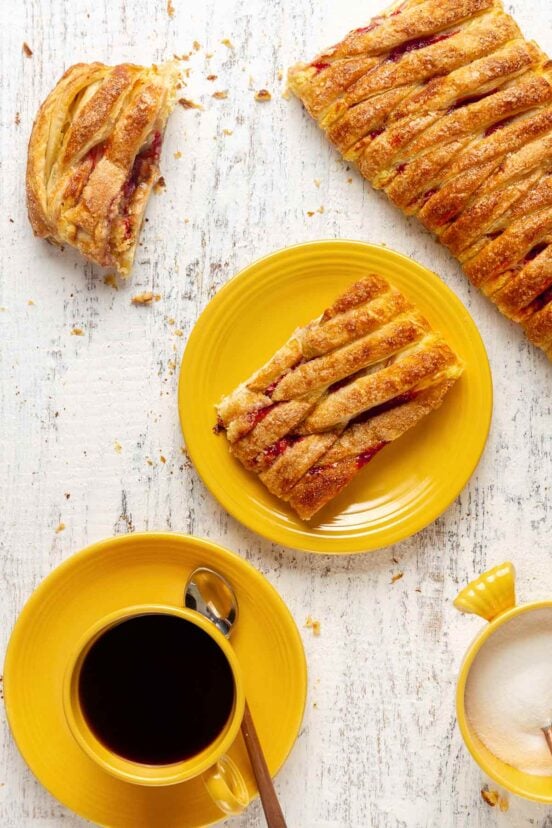
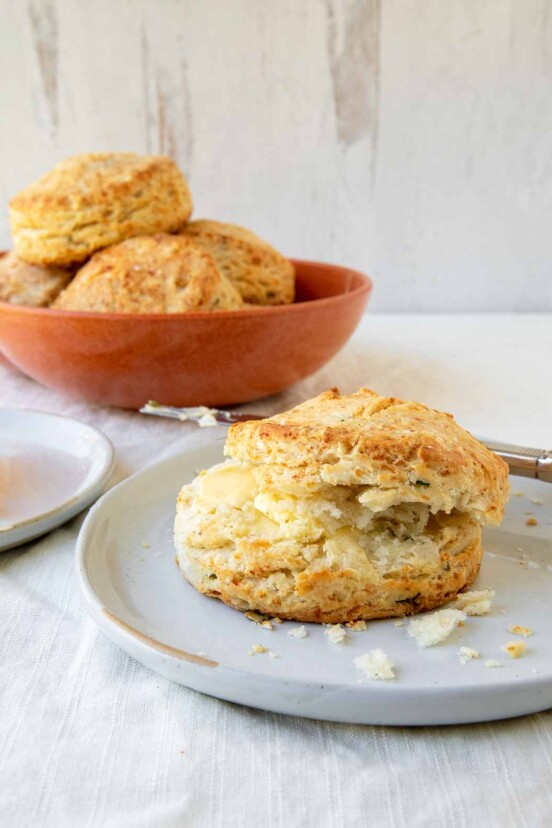
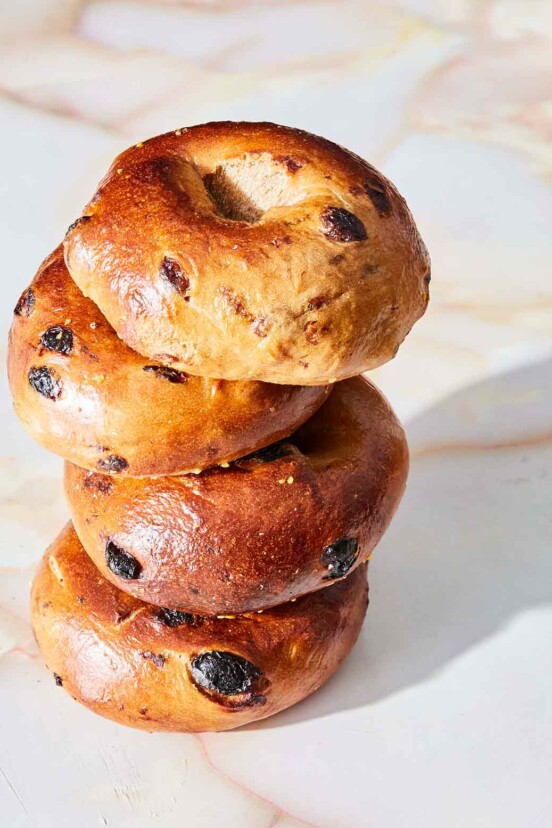









So Mr. Leite… what to do if there is no such thing as self-rising flour? Germans don’t do that sort of flour…. how much baking powder?
Thanks in advance!
Thomas, Mr. Leite is traveling so I wanted to respond on his behalf. Here’s our standard substitution that you can make at home, which I’ve also added to the recipe above. We use this very easy equation: 1 cup of self-rising flour = 1 1/2 teaspoons baking powder + 1/2 teaspoon salt + 1 cup all-purpose flour. Kindly let us know what you think of the biscuits! The sweet potatoes makes them denser than most biscuits, of course, but they’re still tender and moist and lovely, in our opinions.